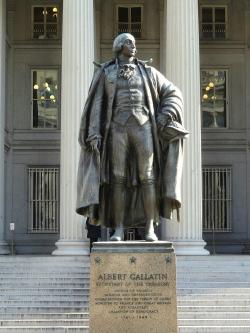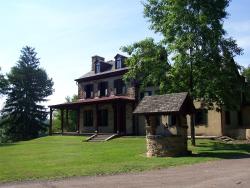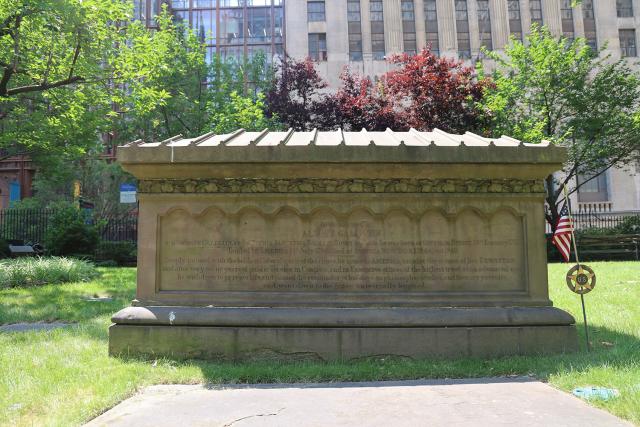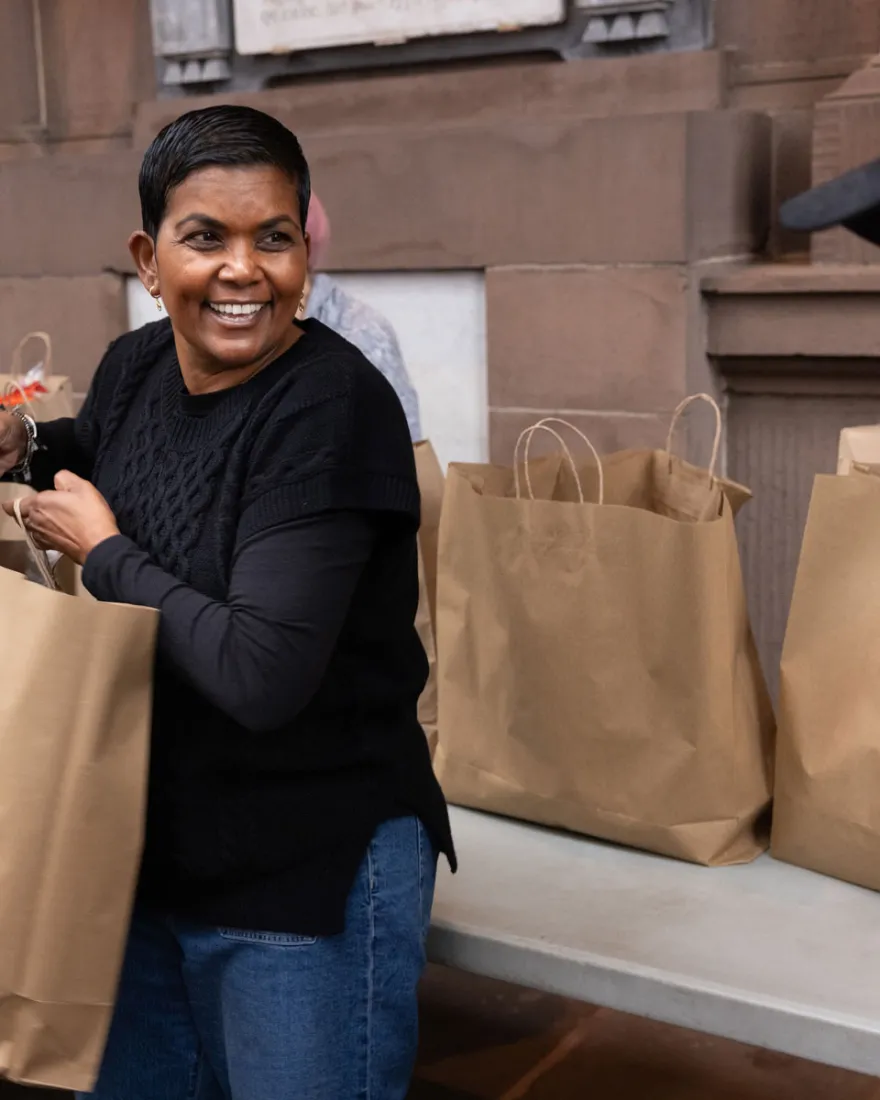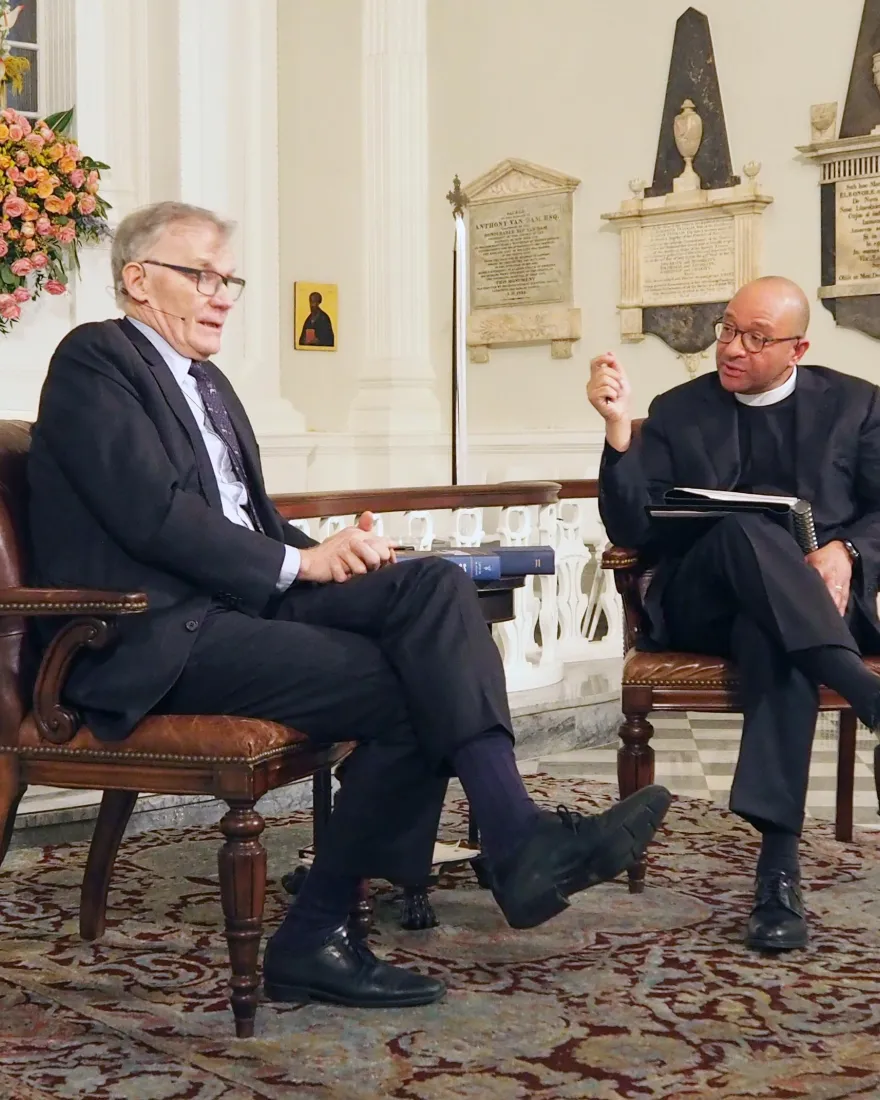Albert Gallatin and Trinity Church
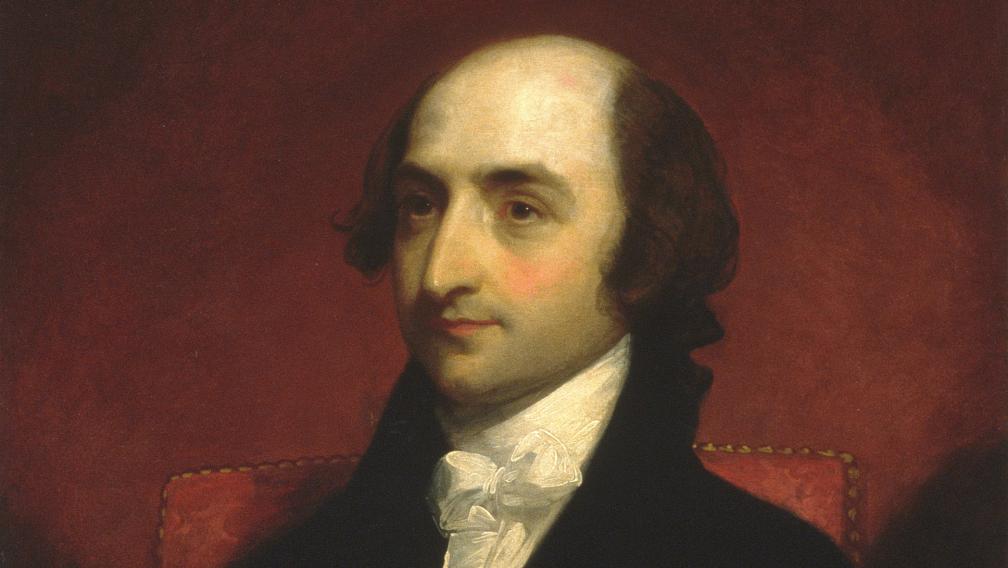
Albert Gallatin, born Abraham Alphonse Albert Gallatin and buried in the north churchyard at Trinity Church, spent nearly 70 years shaping America.
He served in both Houses of Congress and was the longest-standing Secretary of the Treasury of the United States, with 13 years in that office under two presidents: Thomas Jefferson and James Madison. He was also a treaty negotiator, ambassador, educator, and scholar— famed in New York as the founder of New York University.
A real Treasure…sound in his principles, accurate in his calculations and indefatigable in his researches.
- James Madison’s 1796 letter to Thomas Jefferson about Albert Gallatin
Originally from an aristocratic family in Geneva, Switzerland, Gallatin moved to the United States at age 19 in 1780, working his way up in politics as a state politician in Pennsylvania, and then as a senator and congressman in Washington, D.C. between 1789 and 1801. As the fourth Treasury Secretary of the United States from 1801-1814, Gallatin focused on balancing the budget and paying down the national debt. Many of his views and approaches conflicted with Alexander Hamilton’s Federalist policies. In office, he provided a moderating voice during the Whiskey Rebellion, established the House Committee on Finance (the precursor to the powerful Ways and Means Committee), and supported the Louisiana Purchase as a means of avoiding war.
Gallatin’s first wife, Sophie Allègre, died shortly after their marriage, but he married again in 1793, this time to New Yorker Hannah Nicholson, daughter of Commodore James Nicholson, a distinguished Officer of the American Navy during the Revolutionary War. They lived in Western Pennsylvania on 376 acres Gallatin named “Friendship Hill,” after the friends who helped him throughout his life, as well as Philadelphia and D.C.
In 1814, Gallatin became a diplomat, serving in France and Great Britain, and leading negotiations for the Treaty of Ghent that ended the War of 1812. He also helped America recover its financial standing after the war by convincing Congress to charter the Second Bank of the United States.
It wasn’t until 1831 that Gallatin began to spend time in New York City as president of the National Bank of New York. He and his wife resided in New York until their deaths in 1849. While the Trinity Archives don’t have any records confirming Albert Gallatin as a member, he and his wife are buried in the Nicholson Vault through her family, who purchased the vault in 1790.
While in New York, Gallatin continued his life of service, now outside of politics. He founded New York University in 1831 as a small, non-denominational college called the University of the City of New York. He became the head of the New York Historical Society and pursued his interests in Native American languages and culture by founding the American Ethnological Society in 1842, leading to the modern study of anthropology. He also spoke out against the War with Mexico in 1848, continuing to support peace and civil liberties until his final days.
Gallatin’s grave marker reads, “Deeply imbued with the bold and liberal spirit of the times He came to America amidst the scenes of her Revolution and after very many years of public service in Congress and in Executive offices of the highest trust at an advanced age he withdrew to private life and passed the remainder of his days in philosophic studies and literary pursuits and went down to the grave universally honored.”






